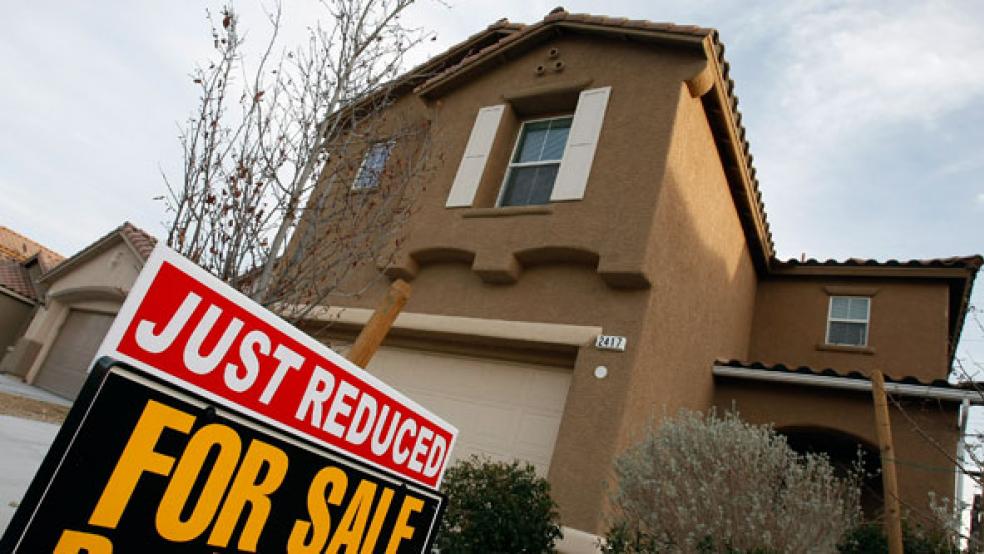As President Obama and Congress get set to renew their battle over how best to stimulate the economy, some experts are warning that both sides are ignoring the one area that is indispensable to renewed economic growth: a revitalized housing sector.
Five years after the housing bubble burst, home markets across the country are barely limping along, and the outlook remains bleak. Historically, the housing market has led the U.S. out of economic recoveries but has failed to do so in this economic slump.
“Regardless of how we got here, we, as a nation, currently have a housing market that is so severely out of balance that it is hampering our economic recovery,” Federal Reserve Governor Elizabeth Duke said in a speech last week in Washington, D.C. She called for renewed government action to rescue troubled homeowners.
Since the financial crisis began in late 2007, U.S. housing prices have plunged more than 27 percent on average according to the S&P/Case Shiller Home Price Index. Nearly 3.5 million homes are in some stage of a foreclosure due to rising unemployment and declining home values. New-home construction is anemic, while sales of existing homes remain at a seasonally adjusted rate of 4.67 million despite record low interest rates. And an estimated 14.6 million homeowners owe more on their homes than they are worth.
Despite historically low mortgage interest rates, refinancing activity remains stuck in the doldrums. Refinancing activity dropped 12 percent last week, according to the Mortgage Bankers Association (MBA).
That has prompted several proposals for federal programs that would provide better refinancing opportunities for more homeowners. One option under consideration by Federal Reserve Board chairman Ben Bernanke is to further lower long-term interest rates by shifting the Fed’s portfolio of government holdings so that the average maturity is longer. Selling some short-term bonds and reinvesting the money in longer maturities should send rates down another notch.
Fed policy already has pushed mortgage interest rates to unprecedented lows, leaving housing affordability extremely high. The 30-year fixed-rate mortgage average dropped to 4.23 percent this week, its second-lowest level yet, from 4.32 percent, according to the MBA.
Lowering rates further would spur more homeowners to refinance their mortgages and put extra cash in their pockets, which should give a boost to consumer spending. Triggering a new mortgage refinancing wave would be equivalent to a $70 billion annual tax break through reduced interest payments, say experts at Columbia University’s Business School.
“Lower interest rates would be very helpful in stimulating the economy, stabilizing the housing market and would allow more consumers to deleverage through refinancing their mortgages,” says Celia Chen, economist with Moody’s Analytics. It would help homeowners on the verge of delinquency to keep up with mortgage payments and support additional consumer spending as more solvent homeowners free up cash they would otherwise spend on paying off debt.
Consumer spending, which accounts for 70 percent of U.S. Gross Domestic Product, has “not been running at a gangbuster speed,” says Anika Khan, economist with Wells Fargo. In fact, consumer spending in the second quarter was a dismal 0.1 percent and Khan expects its growth to remain sluggish.
While the amount of additional disposable income would vary for each homeowner who refinances, Greg McBride, senior financial analyst at the personal-finance website Bankrate.com, says it could add up to several hundred dollars each month for the average homeowner. For example, if a homeowner has a $300,000 mortgage and bought a house in the summer of 2009 when mortgage interest rates were at 5.5 percent, refinancing now at 4.25 percent would save the homeowner $228 each month, McBride said.
But Karen Dynan, economist with the Brookings Institution, warns that stimulating the economy by additional refinancing doesn’t address underwater homeowners, end the continual free fall of home prices, or guarantee that the extra money in homeowners’ wallets would eventually be spent. Another concern raised by a massive new refinancing program is that it would drive mortgage-backed security investors to demand a higher risk-premiums, which would raise housing costs.
It also remains an open question whether a Fed-driven effort to spur refinancing would be successful in helping underwater homeowners. The government’s first effort – the Home Affordable Refinance Program, or HARP – hasn’t worked out so well.
So far, only 800,000 of the estimated 4 million eligible homeowners have refinanced through HARP, an Obama administration initiative launched in 2009. HARP allows refinancing of low- or no-equity mortgages if borrowers meet certain qualifications and if the mortgage is already backed by the government-sponsored entities Fannie Mae and Freddie Mac.
“Given the potential savings to households, the relatively low take-up on this program warrants another look at the frictions that may be impeding these refinancing transactions,” Fed governor Duke said.
Experts say one effective option is to expand the pool of people who could take advantage of refinancing through HARP, specifically by lifting the loan-to-value cap well above the current 125 percent. Many borrowers have not been able to take advantage of lower rates because they have little or no equity in their homes or the high cost of refinancing. Typically mortgage refinancing costs a homeowner about 1.5 percent of the original loan, Bankrate.com’s McBride says.
The Congressional Budget Office released a working paper on Wednesday that considers a one-year model plan allowing homeowners to refinance 30-year mortgages backed by Fannie Mae, Freddie Mac, or the Federal Housing Authority and relax current income and loan-to-value restrictions for borrowers. Although the program would benefit borrowers and lower federal guarantee costs, “it would be costly to mortgage investors, who would experience losses on mortgages that are prepaid,” the report said. Private bond investors stand to lose $13 to $15 million, while doing little to improve the overall mortgage default rate, CBO found.
The study said some 2.9 million mortgages worth $428 billion would be refinanced, saving borrowers $7.4 billion and avoiding 111,000 loan defaults. The CBO estimated the program would cost the government about $600 million.
Chris Christopher, senior economist with Global Insight, says the Administration should focus its efforts on helping homeowners with negative equity who are still paying off their mortgages. Underwater homeowners account for nearly 23 percent of all homes or 10.9 million properties, according to CoreLogic. Christopher said by reducing those homeowners’ mortgage payments and putting their real estate holdings on more solid footing, they are more likely to buy new things due with the savings from the lower payments. “That would be unbelievable for the economy,” he says.




